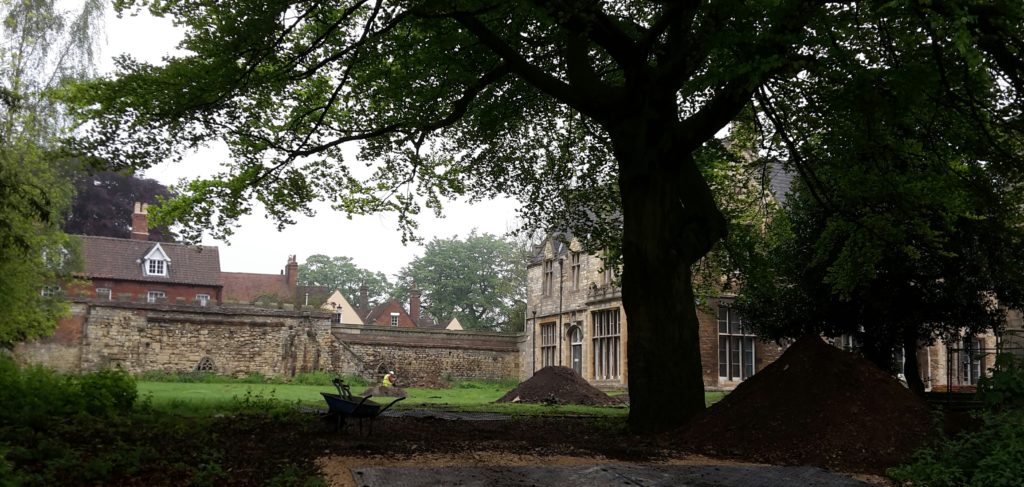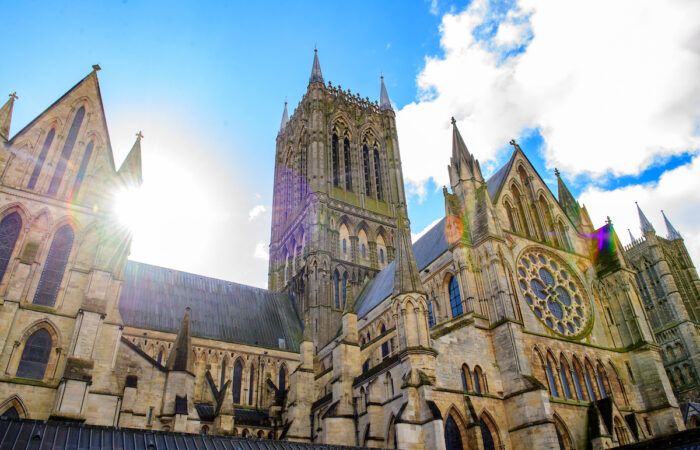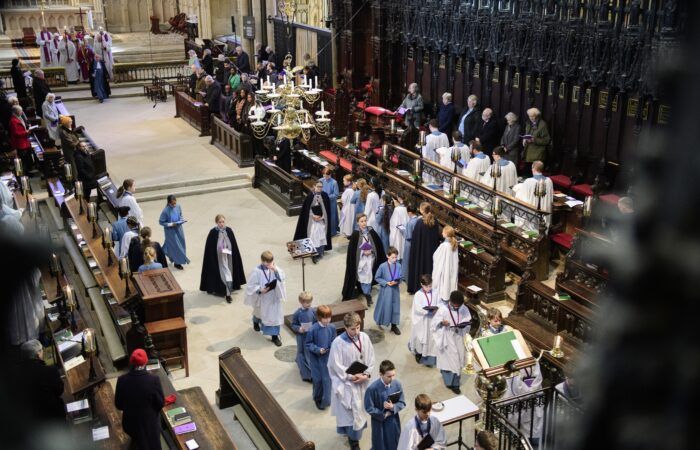Lincoln Cathedral Connected commission Google 3D virtual model of city’s lost medieval buildings
As part of the Lincoln Cathedral Connected project, works have begun on the creation of a Google 3D virtual model which will bring to life a number of medieval buildings that once surrounded Lincoln Cathedral.
The Old Deanery and Works Chantry, which hundreds of years ago used to stand where the existing Deanery building is today to the north of the Cathedral, will be recreated by using 18th and 19th century drawings and plans produced by artists and historians.
The interpretation artwork, which will be complete in June this year, will allow the viewer to ‘stand’ in a virtual courtyard and see 360 degree panoramic views of the two medieval buildings and can be accessed via Google Maps on a PC, laptop, IPad or smartphones
The Connected team have commissioned this project to celebrate the rich history of Lincoln Cathedral and its surrounds and to show the local community and visitors how the area once looked in its medieval heyday.
Lincoln Cathedral Connected recently announced its successful bid to the Heritage Lottery Fund for £16m, which is being used to radically improve the Cathedral’s setting and visitor experience. The funds will be used for important conservation work to the Cathedral, landscaping of Deans Green to create a new outdoor space and the development of a new visitor centre that will include an exhibition gallery, café and shop.
The 3D modelling is being developed by Pighill Archaeological Illustration and Lincoln-based firm Allen Archaeology Ltd.
Peter Lorimer, founder of Pighill Archaeological Illustration, said: “This is a fantastic opportunity to recreate some of Lincoln’s lost heritage. Through virtual means, people will be able to explore not seen before imagery of the courtyard to the north of the Cathedral that was once packed with buildings, archways and gates.
“Allen Archaeology and I are working closely with historians and archaeologists who can help build up a picture of how the site once looked and once complete it will be like taking a step back in time.
“Lincoln Cathedral is an iconic building throughout the UK and it was an unmissable opportunity for us to reconstruct artwork of a site so historically rich.”
Mark Allen, director of Allen Archaeology said “Allen Archaeology feel privileged to be part of the Lincoln Cathedral Connected project. To be able to provide information about the physical remains of the lost buildings so that Peter can recreate them using the latest technology is a rare chance to bring the past to life.”
Anne Irving, programme manager of Lincoln Cathedral Connected, said: “Enhancing visitor experience is at the heart of the Connected project and this fascinating piece of work is part of that vision.
“This innovative virtual reconstruction, which will be based on real objects and artist impressions from the 19th century, as well as documentary evidence and archaeological discoveries we have made over the years, is just one of the many projects we are working on which aims to engage the local people and visitors from further afield in the vibrant history of this wonderful building.
“Nothing like this has been done in the Cathedral Close before and we’re very excited for the interpretation to be revealed this summer.”
The Old Deanery was originally the residence of the Dean of Lincoln and was bounded on the west by the Works Chantry. This building housed a college of four priests who sang masses for the souls of benefactors who had made donations towards the fabric of Lincoln Cathedral. Most of the building, which stood round a courtyard, was demolished in the early part of the 19th century to give a better view of the cathedral. Fragments of the chapel that face Eastgate still survive.


